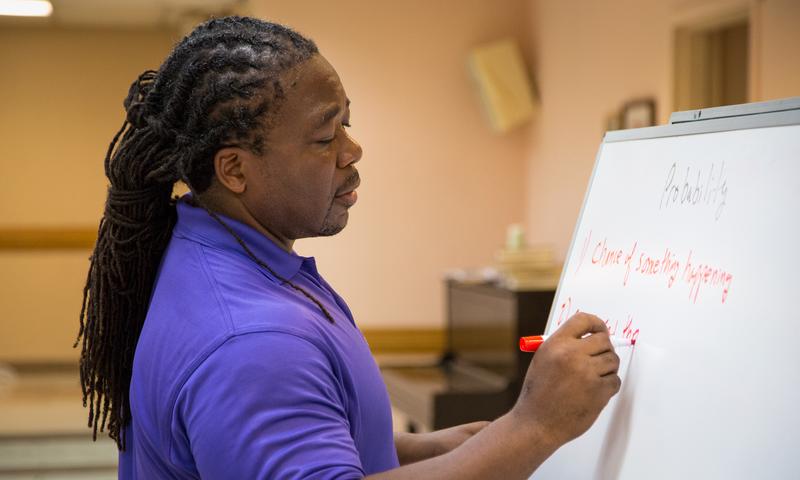
New York City's teaching force has a diversity problem. In a school system where about 43 percent of male students are black, Latino and Asian, men of color accounted for just 8.6 percent of all city teachers last year, according to the Department of Education. That's 6,512 teachers, a number about to shrink further, due to retirements.
"Most of them have been in the system for 10 or 20 years already," explained Cyrus Garrett, executive director of the Young Men's Initiative. "We're not bringing enough to replace teachers that are retiring."
The Young Men's Initiative, which gets $22.5 million annually from the city, was created by former mayor Michael Bloomberg in 2011 to improve the outcomes for black and Latino men. According to the city, they have 1.6 times the high school dropout rate of their white peers, and they are six times more likely to have a felony conviction.
Under Mayor Bill de Blasio, the program has aligned itself with President Obama’s “My Brother’s Keeper” initiative, by launching four new programs aimed at increasing literacy in young children, improving graduation rates and workforce readiness, and protecting youth from violent crime.
Through a program called NYC Men Teach, Garrett said the Young Men's Initiative plans to recruit an additional 1,000 men of color by the end of 2017. Male teachers make up just 23.5 percent of all city teachers, but within this group there are almost twice as many whites as blacks, Latinos and Asians combined.
The teaching force is considered a critical part of providing career options and reducing crime, as well as improving education. Garrett said getting more minority males into the profession will provide powerful role models for all pupils. He also said they can reduce suspensions and disciplinary problems because they have a better understanding of their students.
"That's one of the things we've seen in research," he said. When more male teachers of color are hired, he explained, "there's actually been not a complete turnaround, but definitely a reduction in those numbers of incidents."
The city is planning to hire an additional 200 male teachers of color in 2016 alone, on top of the 300 to 400 it typically hires each year, through alternative certification routes such as Teach for America. Garrett sounded optimistic about recruiting good candidates, because he said the Black Lives Matter movement has sparked a renewed interest in finding careers that can make a difference.
"Presenting teaching as an intervention and seeing a teacher as being a change agent is really attractive to the millennial generation," he said.
To reach the full number of 1,000 additional teachers by the end of 2017, Garrett said the city has begun working closely with CUNY and its guidance offices to identify and support potential candidates as they move through the pipeline.
One obstacle men of color often face in the classroom is feeling isolated, because there are so few of them. Garrett said the city is hoping to alleviate this by pairing schools that hire men of color with other schools that have already done an exemplary job of graduating black and Hispanic males. The city will also provide additional training in restorative justice techniques that can reduce suspensions.
Even with a recruitment goal of 1,000 new teachers, however, Garrett acknowledged the city is just putting a cork in a spilling bottle. It's currently losing about 500 male teachers of color annually. But by setting up sustainable recruitment systems, along with supports, he said the numbers should gradually begin to rise.
